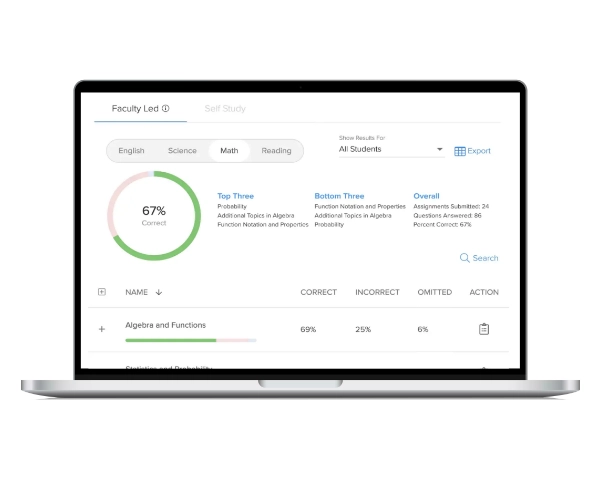H.D. Dickinson, a Cambridge-trained historian of economics, once defined economic planning as “the making of major economic decisions—what and how much is to be produced and to whom it is to be allocated by the conscious decision a determinate authority—on the basis of a comprehensive survey of the economic system as a whole.” There are many types of planning in macroeconomics, but one thing is certain; macroeconomic plans take a significant amount of careful preparation for proper implementation.
Teachers must carefully prepare their plans for AP® Macroeconomics last-minute review, too, because they know that AP Macroeconomics exams are not easy. In the College Board’s® released score distribution report for AP exams (2022), it was reported that just 51.5% of students who took the AP Macroeconomics test passed with a score of 3 or higher.1
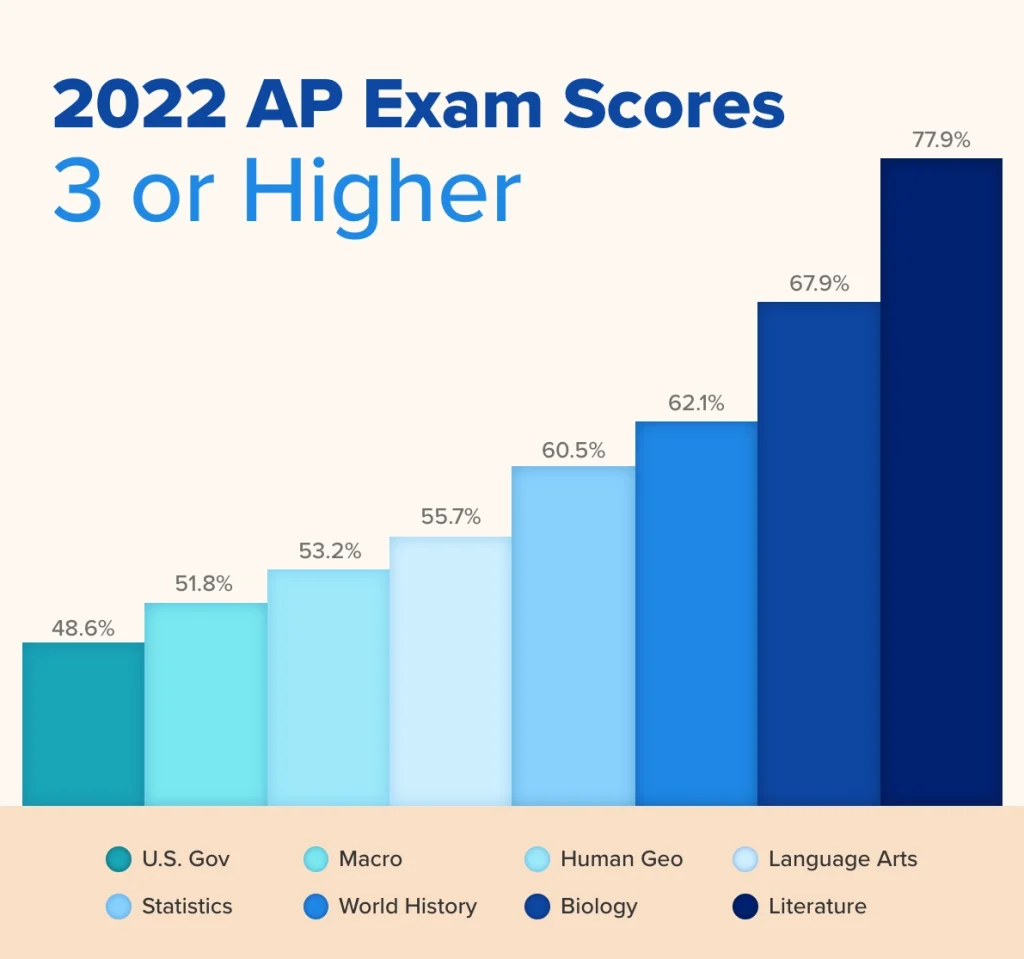
Student Score Distributions on AP exams (2022)
Teachers must meticulously prepare for a rigorous AP Macroeconomics final review in order to provide their students with every opportunity possible to earn a passing score on the exam. To help with the planning process, we’ve provided five tips for AP Macroeconomics last-minute review that can fit into any content spiral.
Tip 1: “Chunk” Curriculum into Smaller, Doable Parts
The goal of organizing several weeks of preparation before the AP Macroeconomics test is to systematically review essential concepts from each course unit, ensuring students retain the material for the exam. However, the challenge lies in the limited time available to cover the extensive content of the entire course. Nevertheless, recent studies suggest that dividing study topics into smaller, more manageable sections is a more effective approach for comprehensive exam review. This technique, known as “chunking,” has proven to be advantageous in optimizing exam preparation and performance.
A study published in the Educational Psychology Review2 examined the impact of dividing information into smaller pieces on student learning. The findings revealed that, through the process of chunking, students gained confidence in comprehending the learning topics. Instead of attempting to cover an entire AP Macroeconomics unit or a significant foundational concept in a single class session, educators can adopt an approach where they focus on smaller portions of the unit or concept gradually. By sequentially addressing key content, students can effectively review and grasp the necessary material for the test.
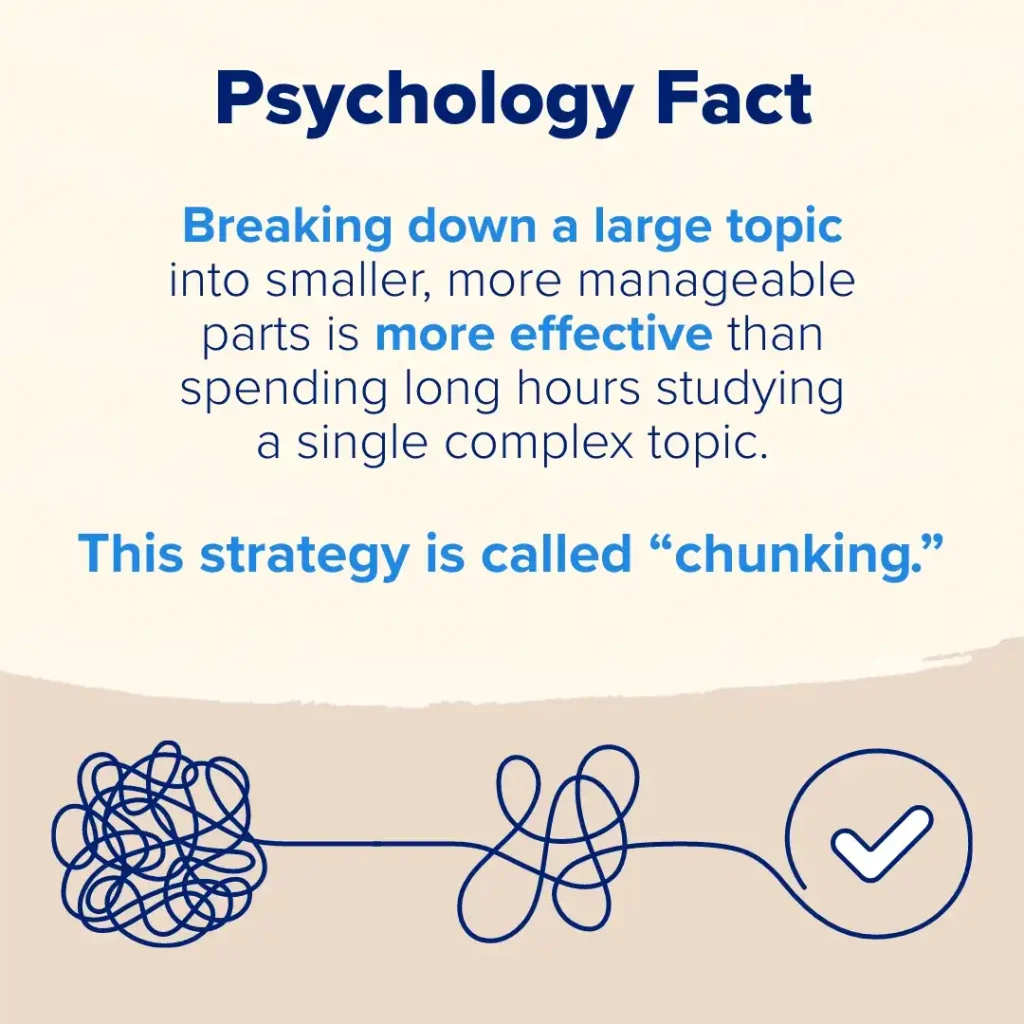
Journal of Educational Psychology Review
To prepare students for the AP Macroeconomics exam, AP Macroeconomics teachers can employ the strategy of “interleaving,” which involves simultaneously reviewing multiple related topics. Studies indicate that when teachers blend various topics together, students develop the ability to differentiate between similar topics and effectively apply their knowledge.2 By incorporating both chunking and interleaving techniques, AP Macroeconomics teachers can instill a sense of readiness and confidence in their students on the day of the test. This comprehensive approach enhances learning outcomes and equips students with the skills to excel in the assessment.
Our Choice for an AP Macroeconomics Exam Review Guide: Anderson’s AP Macroeconomics
Anderson’s AP Macroeconomics Review Materials is our choice for an excellent AP Macroeconomics final review guide that teachers can use as a tool for their summative course review.
Why We Chose It:
- Comprehensive resources: Offers a wide range of review materials including FRQ practice, multiple-choice practice exams, online quizzes, and study guides for comprehensive preparation.
- Variety of practice options: Provides multiple-choice practice exams from different years, allowing for exposure to various question formats and topics.
- Unit study guides: Includes unit-specific study guides to focus on key concepts and topics, aiding in targeted review and reinforcement.
- Additional resources: Provides links to websites with additional notes, slideshows, review games, and quizzes, expanding learning options and reinforcing understanding.
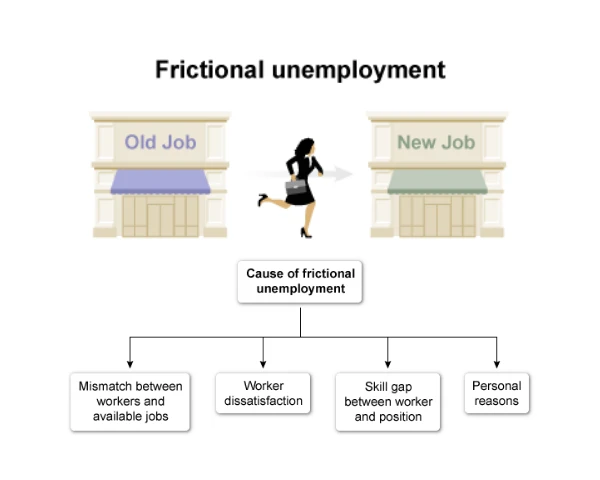
Tip 2: Practice with Released Exam Questions
Allowing students to practice with released exams is a simple yet effective method for AP Macroeconomics instructors to assist their students in preparing for the test. Research conducted at the University of Nebraska-Lincoln3 indicates that practicing with test prep questions that closely resemble those found on the actual exam resulted in an average score increase of 15%. In contrast, studying with questions that differed from those on the real test only yielded a 6% improvement in test scores. Clearly, there is no better approximation to the actual test questions students will encounter on exam day than the ones found in past AP Macroeconomics exams.
Our Choice for Released Exam Questions: The College Board Secure Released Exams
When it comes to finding released AP exams, The College Board is our top pick because they are the exclusive source for downloading authentic released exams. AP teachers can conveniently access these complete and free assessments to incorporate them into their classes, although students themselves don’t have access to them. These secure and recently released exams can also be found in AP Classroom.4 AP Macroeconomics teachers can gather further details about these released tests by referring to the comprehensive AP Classroom User Guides. It’s a valuable resource that equips teachers with the necessary information for effective exam preparation.
Why We Chose It:
- These are genuine AP Macroeconomics questions that have been utilized in past exams.
- They are highly relevant to the current AP Macroeconomics exam since they are developed by the same organization responsible for creating and administering the test.
- A wide array of exam question types is available, allowing AP Macroeconomics teachers to work through a variety of them with their students.
- These questions are conveniently accessible online through the College Board’s website, allowing for easy downloading and printing for offline use.
Tip 3: Multiple-Choice Practice Makes Perfect
Practicing with multiple-choice questions is a must when preparing for the AP Macroeconomics exam. As teachers revisit different topics during review, it’s important to encourage students to tackle at least two multiple-choice questions daily. Utilizing multiple-choice exit tickets or bellringers can be a valuable tool to help students review and reinforce essential concepts that could appear on the test. By incorporating regular practice with multiple-choice questions, students can strengthen their understanding and readiness for the AP Macroeconomics exam.
By tackling multiple-choice questions, students have the opportunity to hone their test-taking skills for the AP Macroeconomics exam. Engaging with a diverse range of multiple-choice problems allows students to develop a routine of employing helpful strategies, such as utilizing annotations, recognizing context clues, and eliminating obviously incorrect answers. These practices cultivate efficiency and accuracy in completing the test. Additionally, consistent practice with multiple-choice questions can enhance time management abilities and acclimate students to the exam’s pace. It’s a valuable approach to empower students and optimize their performance on the AP Macroeconomics test.
Our Choice for Multiple-Choice Practice: UWorld
UWorld’s Learning Tools for AP Courses is the ultimate go-to resource for practicing multiple-choice questions. It’s an incredible tool to incorporate into your last-minute AP Macroeconomics test preparation and provides ongoing support throughout the year.
UWorld’s multiple-choice questions offer students exceptional explanatory feedback, ensuring they receive valuable insights and explanations. The adaptive learning technology employed by UWorld adjusts each lesson based on the student’s comprehension level, delivering personalized practice tailored to their needs.
By utilizing UWorld, students can make the most of their entire academic year. It serves as a comprehensive review tool, allowing students to revisit and reinforce their knowledge, identify their strengths and areas for improvement, and enhance their skills in preparation for the AP Macroeconomics exam.
Moreover, UWorld provides a convenient avenue for quick concept review and multiple-choice question practice during the final weeks of AP Macroeconomics test preparation. This feature enables students to solidify their understanding and sharpen their test-taking abilities efficiently.
Incorporating UWorld’s Learning Tools into your AP Macroeconomics study routine will undoubtedly elevate your test readiness, bolster your comprehension, and maximize your performance on the exam. It’s an invaluable resource that will pave the way for your success.
Why We Chose It:
- Students receive immediate feedback, including a breakdown of correct and incorrect answers, providing detailed explanations for AP Macroeconomics questions. This feedback helps students grasp the underlying concepts and enhance their problem-solving skills.
- The resource offers a wide range of multiple-choice practice questions, encompassing all the topics covered in the AP Macroeconomics exam. With a plethora of practice questions available, students can thoroughly review and master each subject.
- To familiarize students with the time restrictions of the AP Macroeconomics exam, the practice questions are timed. This feature allows students to get accustomed to the exam’s time constraints and enables teachers to evaluate their students’ ability to complete the exam within the allotted time.
- The resource allows for personalized practice sessions, giving teachers the flexibility to select specific topics and question types for their students to practice. This customization empowers teachers to concentrate their AP Macroeconomics final review on the areas where their students need the most assistance, ensuring comprehensive exam preparation.
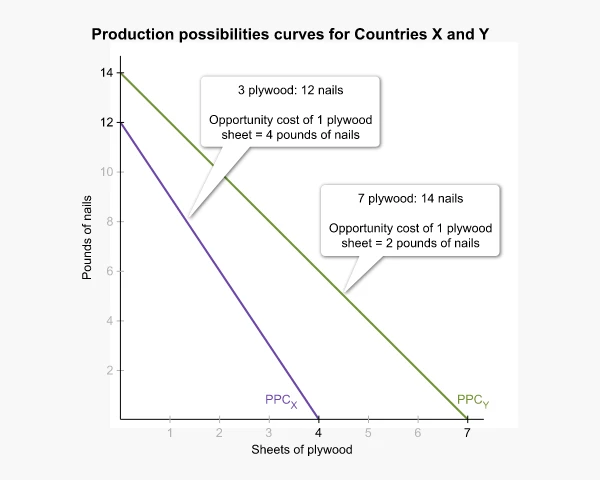
Tip 4: Greater Understanding with Justifications – Studying for FRQs
One of the significant differences between education today and education a few decades ago lies in recognizing the importance of true comprehension. Teachers play a crucial role in ensuring that students not only find the right answers but also understand why they are correct. When preparing for the AP Macroeconomics test, it becomes essential to provide students with ample opportunities to justify their selected answers. This approach helps students become familiar with free-response questions (FRQs) and fosters a deeper understanding of the subject matter when they explain their reasoning in written responses.
According to a study published in the Journal of Computer-Assisted Learning5, students who were required to provide explanations for their answer choices demonstrated a higher level of knowledge compared to those who solely provided answers. By incorporating written explanations into the learning process, students can enhance their understanding and retention of the material.
To make the most of their limited review time for the AP Macroeconomics exam, teachers can guide students in reinforcing their understanding of interconnected topics through the completion of FRQs and the explanation of their responses. Additionally, teachers can support students in achieving success on the exam by sharing online examples of exceptional free-response essays written by other students. Collaboratively generating ideas for FRQs while utilizing sample questions can further empower teachers and students in their exam preparation.
Our Choice for Additional FRQ Practice: CrackAP
For more FRQ practice questions, we recommend the AP Macroeconomics Free-Response practice tests from CrackAP. It makes a great FRQ resource in addition to the released questions from the College Board.
Why We Chose It:
- Comprehensive coverage: The resource offers a wide range of FRQ practice questions that encompass all the topics assessed in the AP Macroeconomics exam, allowing teachers to provide a thorough AP Macroeconomics review in a limited timeframe.
- Time-saving convenience: Teachers planning an AP Macroeconomics last-minute review can quickly access the FRQ practice questions from the provided link, saving time and enabling efficient exam preparation.
- Exam-oriented practice: The FRQs provided closely align with the format and content of the actual AP Macroeconomics exam, ensuring that students are well-prepared and familiar with the exam’s requirements.
- Customizable review: Teachers can select specific FRQs from the resource to target areas where their students need the most practice, tailoring their AP Macroeconomics review to address individual needs and optimize exam readiness.
Tip 5: Repetition with Flashcards
Repetition is key to retaining content, especially when revisiting previous course material and reviewing important vocabulary. Flashcards enable active learning and help improve long-term memory through information retrieval practice. The Central Penn College Learning Center6 emphasizes that flashcards promote active recall, where students engage actively in learning, stimulating their memory and forming lasting connections with the material.
When preparing students for the AP Macroeconomics exam, teachers should cover a wide range of mathematical concepts and essential vocabulary. Engaging in flashcard-based activities during class review keeps students motivated and attentive. Regular use of flashcard-based reviews in AP Macroeconomics classes enhances students’ ability to retain and recall vital course material, whether they study flashcards independently or participate in group AP Macroeconomics review activities.
Our Recommendation for AP Macroeconomics Flashcards: UWorld
We highly recommend UWorld’s flashcards feature as the top choice for AP Macroeconomics flashcards. It’s a versatile and valuable resource for students to review and enhance their understanding of AP Macroeconomics. With UWorld’s flashcards, students have the freedom to create personalized decks and concentrate on specific topics. The user-friendly interface and flexibility of the flashcard feature make it an indispensable study tool for students aiming to excel on the AP Macroeconomics exam.
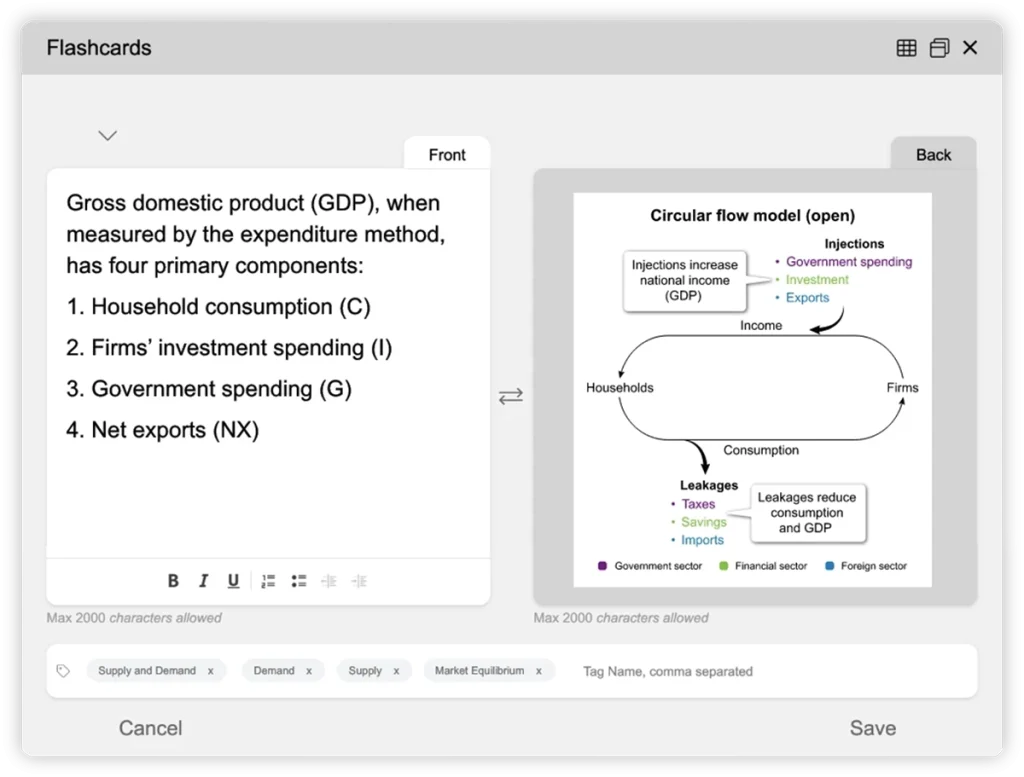
Moreover, educators can incorporate paper flashcards into a range of review tasks for their students. Here are some suggestions on how to seamlessly integrate them into your AP Macroeconomics exam preparation for optimal results.
Prioritize Understanding the Content:
Instead of focusing solely on memorization, strive to establish connections between concepts to enhance your overall comprehension of the subject matter.
Create Your Own Flashcard Deck:
Crafting personalized flashcards compels active engagement with the material and allows you to express the content in your own words, leading to improved memory retention.
Utilize a Combination of Text and Visuals on Your Flashcards:
Incorporating both text and images on your flashcards encourages your brain to establish associations between visual and linguistic representations, facilitating better retention and recall.
Incorporate Flashcards into Enjoyable Review Activities:
Infuse games or other enjoyable activities into your flashcard review sessions to make studying more engaging and pleasurable. This approach can enhance retention and cultivate a positive attitude towards learning.
Instead of focusing solely on memorization, strive to establish connections between concepts to enhance your overall comprehension of the subject matter.
Crafting personalized flashcards compels active engagement with the material and allows you to express the content in your own words, leading to improved memory retention.
Incorporating both text and images on your flashcards encourages your brain to establish associations between visual and linguistic representations, facilitating better retention and recall.
Infuse games or other enjoyable activities into your flashcard review sessions to make studying more engaging and pleasurable. This approach can enhance retention and cultivate a positive attitude towards learning.
Bonus Tip: Prepare Students with Test Day Reminders
This last piece of advice might seem more like general test-taking guidance rather than a specific AP Macroeconomics exam review tip, but it’s crucial to emphasize what students should do and bring on the assessment day. Every year, there are students who forget to bring a pencil, a fully charged calculator, or neglect to turn off their phones, while some even show up late for their AP exams. Surprisingly, a study conducted by the College Board7 found that students who arrived on time and had all the necessary materials for the AP exam scored an average of 20 points higher compared to those who were late or forgot their supplies. So, it’s essential to go through a comprehensive checklist of preparations your students need to complete before the AP Macroeconomics test, including the items they must prepare and bring on the actual test day.
Checklist of Reminders for AP Macroeconomics Students
The Day Before the AP Macroeconomics Exam:
Get a solid eight hours of sleep
Gather all the necessary materials for the test
Avoid cramming for the exam
Eat a nutritious meal and stay hydrated
Take time to relax and engage in stress-relief techniques
Review strategies for taking the test
Double-check the exam’s location and start time
Set multiple alarms to ensure you wake up on time
Pack essential items, including a photo ID
Plan your transportation to the exam site
The Day of the AP Macroeconomics Exam:
Bring multiple sharpened No. 2 pencils with erasers
Carry a pen with dark blue or black ink
Bring a valid government-issued photo ID
Have your AP student packet containing the AP number label and demographic sheet
Bring your exam e-ticket or registration confirmation
Bring a watch to keep track of time
Bring an approved calculator, fully charged
Carry a snack and water, to be kept on the floor during the test and consumed only during breaks
Key Takeaways
Without a doubt, the last month leading up to the AP Macroeconomics exam is a critical time for teachers aiming to provide top-notch content review and AP Macroeconomics test preparation to their students. By following the five suggestions outlined in this article, instructors can enhance their students’ confidence in test-taking and their overall readiness.
Learn more about how we support AP educators who strive to make a difference in the lives of their students with our Learning Tools for AP Courses.

References
- Student Score Distributions* AP exams – May 2022. (n.d.). Retrieved March 22, 2023, from https://apcentral.collegeboard.org/media/pdf/ap-score-distributions-by-subject-2022.pdf
- Rohrer, D. (2012, July 28). Interleaving helps students distinguish among similar concepts – educational psychology review. SpringerLink. Retrieved March 21, 2023, from https://link.springer.com/article/10.1007/s10648-012-9201-3
- The effects of age and professional expertise on … – Wiley Online Library. (n.d.). Retrieved March 22, 2023, from https://onlinelibrary.wiley.com/doi/abs/10.1002/acp.1467
- Formative assessment. AP For All. (n.d.). Retrieved March 29, 2023, from https://apforallnyc.com/formative-assessment/
- Let me explain! the effects of writing and … – Wiley Online Library. (n.d.). Retrieved March 22, 2023, from https://onlinelibrary.wiley.com/doi/10.1111/jcal.12608
- Libguides: Learning Center – Study Skills: Flashcards. Flashcards – Learning Center – Study Skills – LibGuides at Central Penn College. (n.d.). Retrieved March 22, 2023, from https://guides.centralpenn.edu/c.php?g=695569&p=4999857
- Source: College Board. (2021). AP Exam Score Distributions. Retrieved from https://reports.collegeboard.org/media/pdf/2021-ap-student-score-distributions_1.pdf

